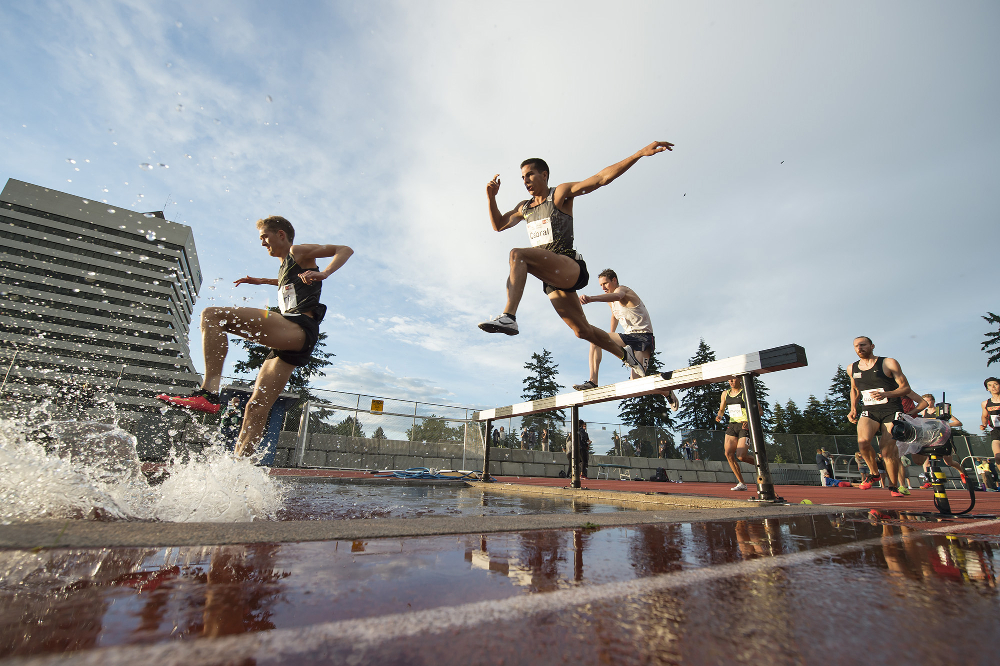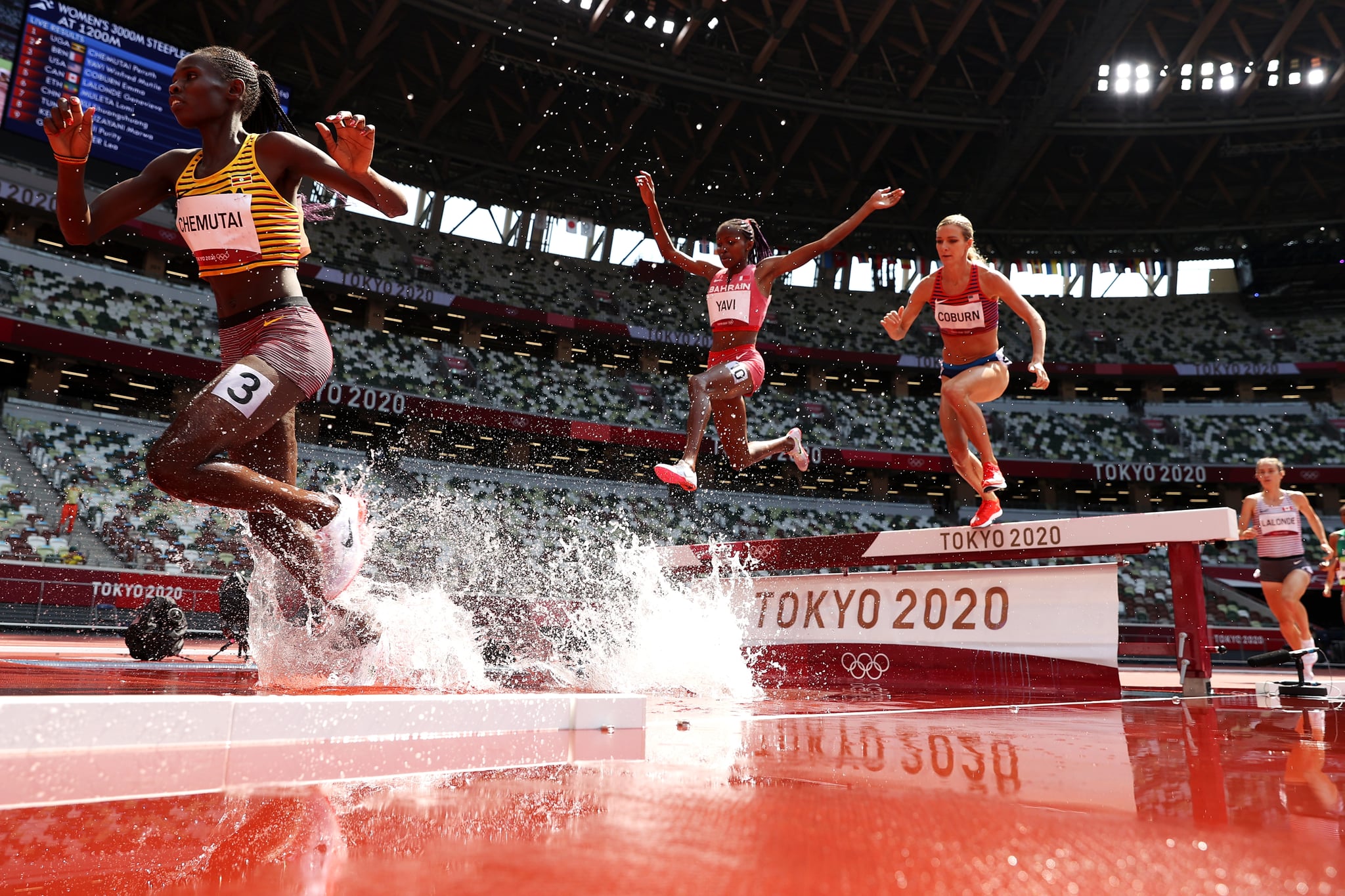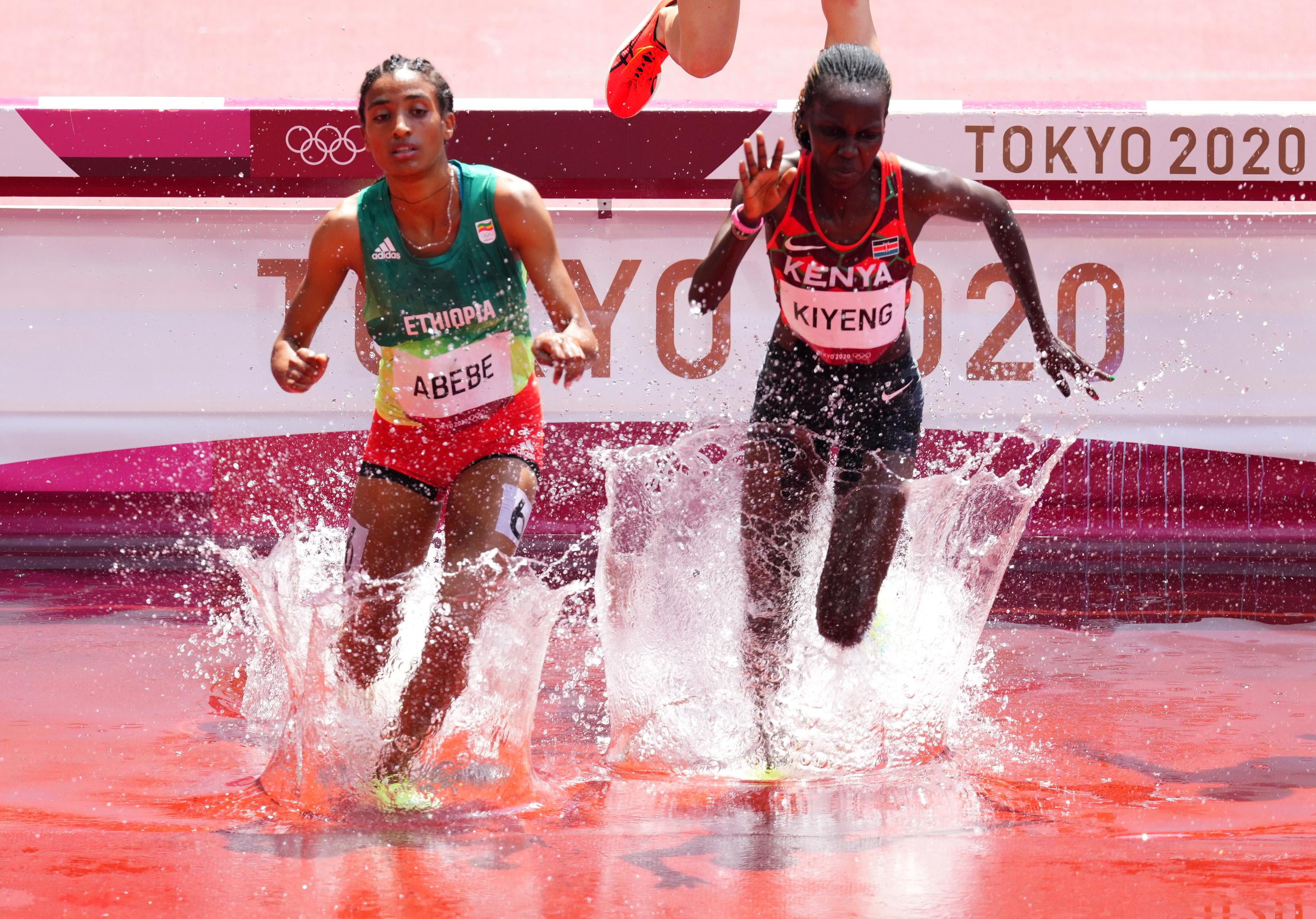History and Evolution of Steeplechase in the Olympics

The steeplechase, a unique and challenging track and field event, has a rich history that intertwines with the evolution of the Olympic Games. Its inclusion in the Olympics reflects the changing landscape of athletic competition and the pursuit of pushing human limits.
The origins of steeplechase running can be traced back to the early 19th century in England, where cross-country races often incorporated obstacles such as fences, ditches, and water jumps. This inspired the creation of the steeplechase, a standardized track race with a set number of hurdles and a water jump, which became popular in athletic clubs and universities.
Early Steeplechase Events
The first official steeplechase race was held in 1860 at the Oxford University sports day. The early steeplechase events were significantly different from the modern-day format. For example, the distance varied widely, and the number and type of obstacles were not standardized. However, the core elements of the event, including the hurdles and the water jump, were already present.
Inclusion in the Olympic Games
The steeplechase was first included in the Olympic Games in 1900 at the Paris Games. The event was contested over a distance of 2,500 meters, with a total of 28 obstacles. This early version of the steeplechase was more challenging than the modern-day format, as the hurdles were higher and the water jump was wider.
Evolution of Techniques and Strategies
Over the years, the steeplechase has undergone several changes, including the standardization of the distance and the number of obstacles. The modern-day steeplechase is contested over a distance of 3,000 meters, with 28 obstacles (35 hurdles and a water jump).
Changes in Techniques
Early steeplechase runners relied heavily on brute strength and endurance to overcome the obstacles. However, as the event evolved, runners developed more sophisticated techniques for clearing the hurdles and the water jump. These techniques included the use of a running leap, the “high-knee” approach, and the “skip” technique for the water jump.
Changes in Strategies
The development of these techniques has also influenced the strategic approach to the steeplechase. Runners now focus on maintaining a consistent pace throughout the race, conserving energy for the obstacles, and making strategic moves at key points in the race.
Notable Steeplechase Runners
The history of the steeplechase is filled with iconic athletes who have pushed the boundaries of human performance. These athletes have made significant contributions to the development of the event and inspired generations of runners.
Notable Runners in the Early Era
* Jim Thorpe (USA): Thorpe, a legendary athlete, won the steeplechase at the 1912 Stockholm Olympics.
* Paavo Nurmi (Finland): Nurmi, known as the “Flying Finn,” was a dominant runner in the 1920s and 1930s, winning multiple Olympic medals in the steeplechase.
* Volmari Iso-Hollo (Finland): Iso-Hollo, another Finnish runner, was a fierce competitor in the steeplechase, winning gold at the 1936 Berlin Olympics.
Notable Runners in the Modern Era
* Julius Achon (Uganda): Achon was the first African athlete to win an Olympic medal in the steeplechase, taking bronze at the 1996 Atlanta Olympics.
* Saif Saaeed Shaheen (Qatar): Shaheen, previously known as Stephen Cherono, dominated the steeplechase in the early 2000s, setting a world record in 2004.
* Ezekiel Kemboi (Kenya): Kemboi, a Kenyan runner, has won three Olympic gold medals in the steeplechase, solidifying his status as one of the greatest steeplechasers of all time.
The Challenges and Techniques of Steeplechase Running: Steeplechase Olympics Fall

The steeplechase, a thrilling event in track and field, pushes athletes to their physical and mental limits. It’s not just about speed; it’s about overcoming unique obstacles, demanding precision and strategy.
Water Jump Techniques, Steeplechase olympics fall
The water jump is arguably the most iconic obstacle in the steeplechase. It’s a test of courage and technique. Athletes need to maintain their momentum while clearing the water and landing safely on the other side.
- Approach: A strong, consistent approach is crucial. Runners need to build up speed and maintain a good rhythm, aiming for the takeoff point with precision.
- Takeoff: The takeoff should be powerful and explosive, launching the athlete over the water. A proper takeoff angle is essential for clearing the water without losing momentum.
- Landing: A controlled landing is vital to avoid injury. Runners aim for a soft landing, absorbing the impact with their legs and minimizing the risk of stumbling.
Barrier Techniques
Steeplechase barriers are higher than standard hurdles, demanding a different approach.
- Approach: Runners need to adjust their stride length and rhythm to approach the barrier at the correct speed and angle. A smooth, flowing motion is key to clearing the barrier efficiently.
- Takeoff: The takeoff should be swift and powerful, propelling the athlete over the barrier.
- Landing: A controlled landing is crucial. Runners need to land softly on their feet, maintaining balance and minimizing the risk of stumbling.
Running Styles and Strategies
Top steeplechase athletes employ diverse running styles and strategies.
- Pace Strategy: Some athletes opt for a conservative pace, saving energy for the final laps. Others prefer an aggressive approach, pushing the pace from the start.
- Obstacle Technique: Different athletes have distinct techniques for clearing obstacles. Some favor a more powerful, explosive approach, while others prefer a smoother, more fluid motion.
- Mental Toughness: The steeplechase demands exceptional mental toughness. Athletes need to stay focused, overcome fatigue, and maintain their composure throughout the race.
Notable Steeplechase Athletes and Performances in the Olympics

The Olympic steeplechase has witnessed some of the most thrilling and memorable moments in track and field history. It is a race that demands not only speed and endurance but also technical skill and mental fortitude. Over the years, legendary athletes have emerged, leaving an indelible mark on the sport with their remarkable performances and records.
Notable Steeplechase Athletes
The following are some of the most iconic steeplechase athletes who have graced the Olympic stage:
- Saïd Aouita (Morocco): Aouita is widely regarded as one of the greatest steeplechasers of all time. He dominated the 1980s, winning the 1984 Olympic gold medal in Los Angeles with a world record time of 8:05.12. Aouita’s remarkable speed and endurance allowed him to break the world record three times, and he also holds the world record for the 3,000 meters steeplechase.
- Julius Kariuki (Kenya): Kariuki was a formidable steeplechaser who won the 1988 Olympic gold medal in Seoul, South Korea. He was known for his strong finishing kick and his ability to maintain a consistent pace throughout the race. Kariuki’s victory in Seoul marked the beginning of Kenya’s dominance in the steeplechase.
- Conzelus Kipruto (Kenya): Kipruto is a Kenyan steeplechaser who has won two Olympic gold medals, in 2012 and 2016. He is known for his aggressive running style and his ability to close races with powerful surges. Kipruto holds the current world record for the 3,000 meters steeplechase, which he set in 2011 with a time of 7:53.63.
- Ezekiel Kemboi (Kenya): Kemboi is another Kenyan steeplechaser who has won three Olympic gold medals, in 2004, 2012, and 2016. He is known for his tactical brilliance and his ability to outsmart his opponents. Kemboi is also a four-time world champion, making him one of the most successful steeplechasers in history.
Memorable Performances and Record-Breaking Moments
The Olympic steeplechase has been the scene of some of the most thrilling and memorable moments in track and field history.
- Saïd Aouita’s world record in Los Angeles (1984): Aouita’s world record performance in the 1984 Olympics was a defining moment in the history of the steeplechase. His time of 8:05.12 shattered the previous world record by over 4 seconds and set a new benchmark for the event. Aouita’s victory was a testament to his incredible speed and endurance.
- Ezekiel Kemboi’s dramatic victory in Athens (2004): Kemboi’s victory in the 2004 Olympics was a classic example of his tactical brilliance. He trailed the leaders for most of the race before making a powerful surge in the final lap to claim gold. Kemboi’s victory was a testament to his ability to outsmart his opponents and deliver a winning performance under pressure.
- Conzelus Kipruto’s dominant performance in Rio (2016): Kipruto’s victory in the 2016 Olympics was a dominant performance that showcased his incredible speed and endurance. He led the race from start to finish and crossed the line with a comfortable margin of victory. Kipruto’s performance solidified his status as one of the greatest steeplechasers of all time.
Factors Contributing to Steeplechase Success
Several factors contribute to the success of prominent steeplechase athletes.
- Speed and endurance: Steeplechasers need to be fast runners over a long distance. They need to have the speed to cover the ground quickly and the endurance to maintain a strong pace throughout the race.
- Technical skill: Steeplechasers need to be able to clear the barriers efficiently and smoothly. This requires good coordination, balance, and timing. They also need to be able to negotiate the water jump without losing momentum.
- Mental fortitude: The steeplechase is a demanding race that requires mental toughness. Athletes need to be able to handle the pressure of competition, stay focused throughout the race, and overcome any setbacks they may encounter.
- Tactical awareness: Steeplechasers need to be aware of their opponents’ positions and strategies. They need to be able to anticipate their opponents’ moves and adjust their own race plan accordingly.
Steeplechase olympics fall – The steeplechase in the Olympics is a thrilling event, a test of both speed and agility. Imagine the runners, their hearts pounding, as they hurdle over the barriers, the crowd roaring with anticipation. After the race, though, they might crave a moment of relaxation in a cream leather office chair with no arms , allowing their muscles to unwind.
The steeplechase is a display of human power and resilience, a reminder that even the most intense competition can be followed by moments of peace and comfort.
The steeplechase at the Olympics was a nail-biter, with athletes tumbling over the barriers and pushing their limits. But one runner who stood out was Lamecha Girma, a rising star from Ethiopia. You can read all about his recent achievements and the impact he’s making on the world of athletics in this lamecha girma update.
It’s inspiring to see his dedication and talent, and it’s a reminder that the steeplechase is a truly thrilling event to watch.